Do you want to paint a bathroom vanity as DIY work without hiring any expert?
If you have been tired of seeing an old look in your washroom and want to bring a pleasant change but at a limited cost, painting it is the best option. It is a simple process for which you do not need to hire anyone.
Even if you haven’t experienced it before yet, you can easily go for it if you have the right tools and materials needed for this purpose.
How to Paint a Bathroom Vanity?
- Before starting the work, prepare everything to get the best results.
- Remove all the doors and cabinets that might become hurdles in work.
- Get your hands on a damp cloth and remove the dirt.
- Change the hardware if needed and if any hole needs to cover, use a wood filler.
- Choose the paint wisely, keeping in mind the cabinet quality.
- Paintbrushes and rollers should be of high quality.
- Start painting the cabinet.
- After each coat, apply the sandpaper for even finishing.
- Lightly sand the entire surface to bring shine.
- Attach the cabinets and doors once you are done.
Tools and Materials
Below are those essential tools and supplies you should get your hands on if you want to complete this task without any inconvenience. It includes:
- Bathroom Cabinet
- Cleaner
- Painter’s tape
- Paint
- Brushes
- Pipe wrench
- Small foam paint roller
- Topcoat
- Blue sponge applicator
- Grid sandpaper (if required)
- Putty knife (if required)
You might need a few other tools as well, according to the requirement.
Painting Bathroom Vanity Ideas
Painting has always been fun, but it is not wise to straightly jump to the painting part as you have to do some preparations before starting to paint a particular area. There are some unique bathroom vanity ideas to upgrade your bathroom.
Now you are familiar with all the tools and materials you require in this process, let’s get straight to the process that is simple and easy to follow and can be done without anyone’s assistance. The methods include:
1. Get Rid of Drawers and Doors
The most important thing is to get rid of all the doors and drawers in the bathroom so that they do not become a hurdle in your work. If you do not remove them, then it will create a mess and it will take more time to paint the bathroom vanity.
Hence, it is better to eliminate them and place them in a safe location so that you can easily attach them once the painting work is done.
2. Remove the Dust
After removing the doors, cabinets, or any type of furniture, the next step is to clean all the mess, including dust, dirt, etc. Cleaning is the first step in painting, and if you do not clean the surface before painting, then you will be in trouble.
There might be a lot of soap scum, so it is important to clean it as well. You can use different cleaning solutions to give a thorough wash to your bathroom so that it is all set for the paint.
Mixing dish soap in water is suitable for cleaning the furniture. Various cleaning solutions are available in stores as well.
3. Change the Hardware
If you want to change the hardware, then decide at this step because you need to do a lot of preparations in this regard. If you have made up your mind to change it, then ensure whether the current holes are accurate or it might require more holes for drawers and cabinets.
If new holes are needed, then do not forget to fill the previous holes by using wood filler. Once it is completely dried, then cover it with sandpaper. As far as drilling new holes are concerned, you can do it now or leave it after painting work.
4. Smooth Your Oak Wood Grain
If your bathroom cabinets are made of wood grain, you might have experienced cracks or rough texture even after painting them thoroughly. It is one of the common issues with oak wood grain which you can easily handle by smoothing it.
So what can be the solution? Instead of using wood filler, the best way to get rid of the wood grain is spackling. It is a paste that is normally used to cover all the holes and cracks and is widely used in the United States.
For a thin layer, better use a putty knife. Apply all over the surface and let it dry for a few minutes. Once it is completely dry, use 220 grit sandpaper. You will be astonished by the unbelievable results.
After sanding it, you can remove the dust with a microfiber cloth. However, ensure not to use a wet cloth otherwise, the spackling will be removed.
5. Prepare the Cabinets
Now, what’s next? Many people get confused here about whether we should go for sanding, or we should choose primer. No one wants to opt for work that is not required because it completely wastes your time and energy.
Hence, it is important to brace yourself with the right information before jumping into any work. The question here is whether your cabinets need sanding or not.
The answer to this simple question completely depends on the type of cabinet and the type of paint you are using. If the installed cabinets in your bathroom are shiny, then better go for light sanding only.
On the other hand, if your cabinets are rough and then some preparation, then sanding is the best choice but keep it light. The main purpose of sanding is to give a smooth and even finishing, so it is not wrong if you go for sanding before painting any surface.
However, if you have standard bathroom cabinets, people usually avoid sanding them.
6. Use Primer if Needed
After sanding, another main question that confuses people is using a primer before painting. Whether you use a primer depends on the type of paint and the type of cabinets installed in your bathroom.
If the cabinets are dark wood and you want to paint them in white color, then it is better to use a primer. However, if you have previously used oil base paint on the cabinets then you have to use a primer that is oil-based before painting them.
Sometimes you are not sure when the last time you paint your cabinets is, so here the problem occurs. For this purpose, you can do some experiments and use a primer on the unnoticeable side to ensure whether it is good for your cabinets or not.
If you are about to use regular latex paint then you have to use a primer before painting so that the paint doesn’t stick. You can also follow the instructions given by the manufacturer to know whether to use a primer or not.
7. Choose a Cabinet Paint
Now you have made all the preparations, so you are all set to paint them. For this, you have to get your hands on the best paint for bathrooms cabinet that not only looks good but also has a long life.
Indeed it is tough to make a selection due to numerous choices, but you can choose General Finishes Milk Paint which is one of the best cabinet paints and doesn’t require any primer or sanding. Moreover, it gives a smooth and even finishing.
You also do not need any individual sealer, but it is better if you use one. Hence, if you are unable to find any option, go for this one, and you will never be disappointed because it is the best bathroom vanity paint.
8. Use Rollers and Paintbrushes
Do you know that brushes play a huge role in giving even and smooth finishing? Hence choose them wisely. You might be wondering whether to use paint spray at this step or not.
Yes, you can skip it as it is not vital to use. As far as paintbrushes are concerned, never opt for low quality; otherwise, you will never get the required results.
Whether you want to paint a bathroom vanity or you want to paint kitchen cabinets, never compromise on rollers and brushes. If you use low-quality brushes, then there will be loose bristles occurs, making the paint surface uneven.
In case you are looking for a recommendation, you can go for small foam paint rollers. They are normally used for this purpose and are quite acknowledged everywhere.
9. Paint your Bathroom Vanity
Now you have selected all the required items, so you are all set to change your bathroom with beautiful paint. Start from the edges of the cabinet and give a smooth finish to it. If you pay special attention to a few important points, then smooth finishing is guaranteed.
Those important points include:
- While painting, always use long smooth strokes instead of opting for short ones.
- Whenever you are using a roller, ensure the roller is enriched with enough paint so that you do not have to apply a lot of pressure while painting.
- Once you are done with the first coat, do not touch any area even if you notice light paint on specific areas. Let it dry and then do any further work otherwise, the situation will be messed up.
- After the first coat, wait for some time and then do the second coat.
10. Lightly Sand
Once you are done with the first coat, both on the front and back side of the vanity, it’s time to sand in order to bring smoothness. Lightly sand the surface and after the second coat, repeat the same process.
Best Primer to Paint Bathroom Cabinets
It is important to choose the right primer; otherwise, it might destroy the entire texture of your vanity. Sherwin Williams Multi-Purpose primer is one of the best options you should consider if you have been looking for one.
You can also choose latex-based primers or oil-based primers as they are helpful to bring a smooth and even finish. A few other best primers list include Zinsser water-based primer, Zinsser oil-based primer, and many more.
The selection of primer also depends on the kind of paint you are using and the kind of cabinet installed in your bathroom, so make the decision wisely.
FAQs – Frequently Asked Questions
I hope that you have got many ideas for painting bathroom cabinets but the guide is not complete yet. Let’s cover a few questions that make people doubtful regarding what type of paint to use for the bathroom.
What Kind of Paint Do You Use on a Bathroom Vanity?
The kind of paint you should use on a bathroom vanity is latex, oil, or chalk-based paint. Oil-based paint protects the surface against any damage while latex is water-based and has less odor.
Can You Paint an Existing Bathroom Vanity?
Yes, you can paint on the existing bathroom vanity but it is appropriate to remove the vanity before painting so that you can easily complete the work. You can later re-install it.
Can I Paint the Bathroom Vanity Without Sanding?
If you want an even and smooth touch, then it is good to lightly sand the surface before painting. It gives shine and the texture turns out pretty amazing.
What Kind of Paint Do You Use to Paint Bathroom Cabinets?
The most common and the best type of paint for the bathroom is said to be acrylic enamel paint.
Final Thoughts
After this guide, you will finally be able to learn how to Paint a Bathroom Vanity Like an Expert. Painting any cabinet, be it the bathroom or kitchen, is a simple process, so you do not need to call an expert for this easy task.
In this article, we have discussed the detailed methods in the simplest way possible for your convenience and knowledge. If you are planning to refinish your bathroom vanity or if you are looking for the best bathroom cabinet paint, this guide has all covered.
I hope it will assist you in completing this task easily.
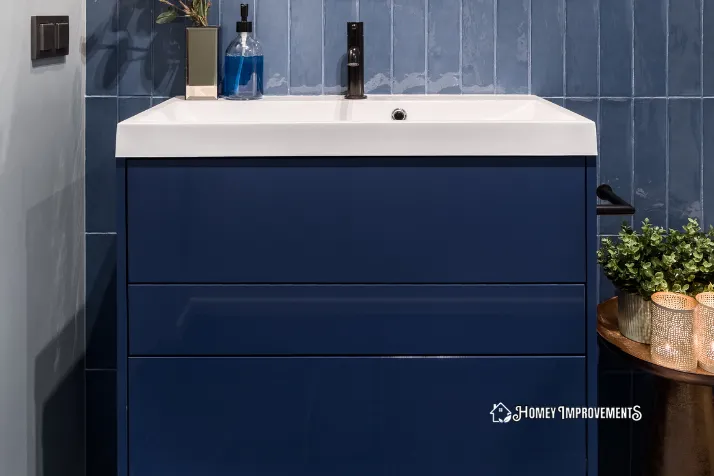
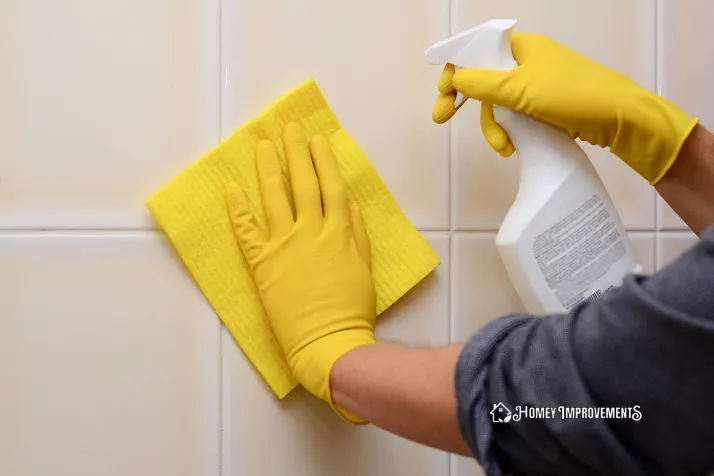




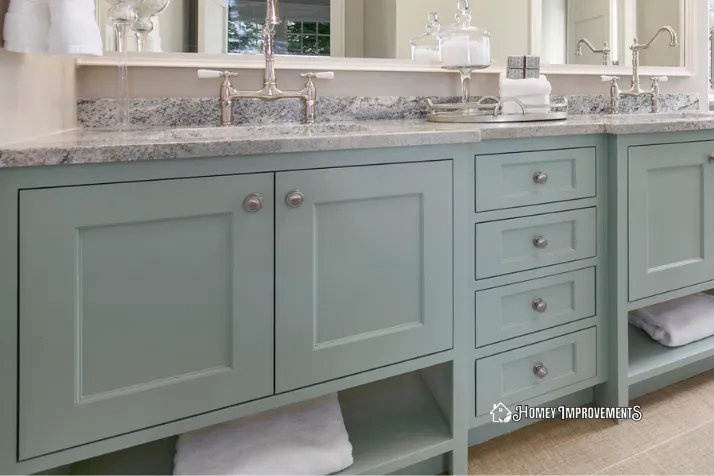
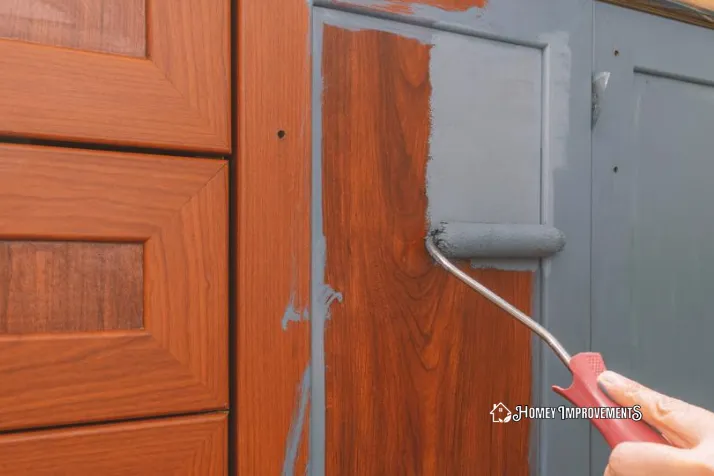
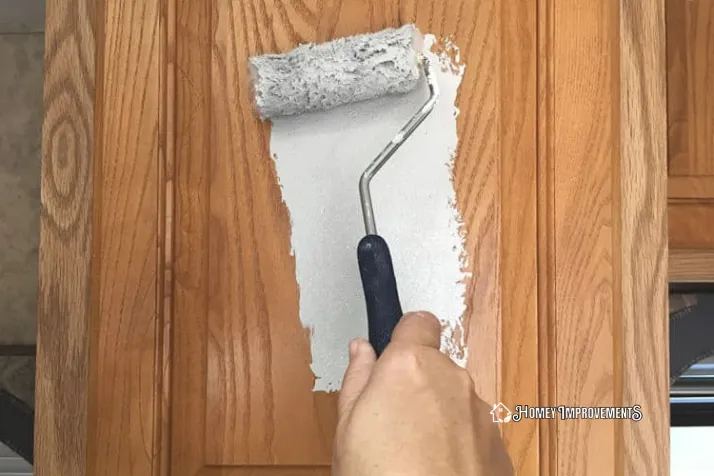
Leave a Reply